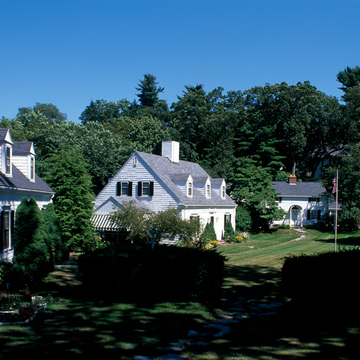Lantern Lane's six colonial houses grouped around a communal green were considered a model for contemporary suburban planning. In the October 1932 issue of House Beautiful, the siting of the houses was praised as an example of how small properties could be enhanced by their relationship to a shared space. Edward Sears Read designed the first four Lantern Lane houses in 1930, just after the onset of the Great Depression, when American architects turned their attention to issues relating to the small house. A year later, House Beautiful designed one of the last two houses to be built, 3 Lantern Lane, and offered the plans to its readers. From the beginning, all of the houses were painted white, adding to the harmony of the development.
You are here
Lantern Lane
1930–1931, all Edward Sears Read, except 3 Lantern Lane, Miss Kinton, House Beautiful Publishing Co.
If SAH Archipedia has been useful to you, please consider supporting it.
SAH Archipedia tells the story of the United States through its buildings, landscapes, and cities. This freely available resource empowers the public with authoritative knowledge that deepens their understanding and appreciation of the built environment. But the Society of Architectural Historians, which created SAH Archipedia with University of Virginia Press, needs your support to maintain the high-caliber research, writing, photography, cartography, editing, design, and programming that make SAH Archipedia a trusted online resource available to all who value the history of place, heritage tourism, and learning.






